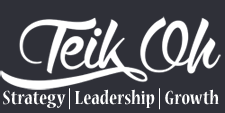Protect Your Business In Tough Times
As we open up after the pandemic lockdowns, many businesses are yet to fully recover. In fact, some may never recover from the enforced closures and the extended reduction in demand as customers preferred to stay home to be safe.
While people begin to embrace this new world, it is still tough out there.
This means we have to think of ways to protect your business in tough times.
While it may not be possible to be fully proofed against these times, what is possible is to secure your business as much as possible by following some common-sense business strategies.
These strategies can be either “defensive” or “aggressive” strategies.
As your profit performance drops it is difficult not to panic and to tighten all your spending. However, you can tighten things too much. While it is natural to seek defensive strategies such as cutting costs, it is important to keep in mind the more aggressive strategies – those that your business should take to ensure that you are the one in your industry survives while others are closing down.
Defensive Strategies
Let us deal with the defensive strategies first and get them out of the way.
There are six simple strategies that you need to look at right now.
1. Control your inventory
2. Retain your cash
3. Keep collecting your receivables
4. Cut your unnecessary costs
5. Review your borrowing arrangements
6. Increase efficiency
First, control your inventory.
Find out immediately which lines of stock sell quickly. These are the ones that don’t stay on your shelves. Calculate the number of days each stock item takes to turn over from purchase to sale. Calculate economic order quantities (EOQ) for each line of stock. Your EOQ is the lowest number of units of stock you need before each re-order. Holding on to too much stock, for too long is a hidden cost.
Second, retain your cash.
Today more than ever, “cash is king”?
Where assets such as equipment may have been good investments in times of growth, in times of recessionary influences, when they are less efficient because of lower demand, they are another hidden cost. You need to retain cash and convert as many unnecessary assets as possible into cash.
Having cash in hand is useful to take advantage of opportunities, save costs and make rainy day decisions.
The other 5 defensive strategies will help you retain cash, however, the most important strategy is to keep the focus on cash and cash transactions – how much does your product cost? Can you find a cheaper supply? Are discounts available? Are you carrying excess assets that can be sold?
Third, keep collecting your receivables.
Ensure that you are in constant communication with your customers so that you are aware of their trading conditions. Do not get caught out by customers closing down while owing you money.
Review your credit policies and ensure that you follow them to the letter. As soon as debts become overdue, call them and find out why. Offer discounts for early payment (without allowing margins to suffer significantly). Be prepared to cut customers who are using you as their bank.
Fourth, cut your unnecessary costs.
Review all your expenditures and ask yourself if any savings can be made.
However a word of caution here! The answer must be in the light of maintaining trading positions.
It may be clear that you can save costs by reducing telephone lines from 6 to 4, but if your business needs constant telephone contact with customers and all 6 lines are constantly lit up, reducing this cost merely restricts your trading model.
Fifth, review your borrowing arrangements.
Most businesses have a medium-term relationship with their bank, that is, they arrange a loan and then fail to communicate with their bank until it is time to renegotiate.
Instead, you must keep your lines of communication with banks open. Ensure they receive financial reports from you on time, and develop a relationship with your bank manager so that they know how your business is travelling. At the same time, review your borrowing arrangements – they may have been made some years ago when interest rates were high. See if borrowings can be refinanced or renegotiated.
Finally, the sixth defensive strategy is to increase efficiency.
When times are good efficiency is often allowed to slip, particularly as too few businesses actually measure “efficiency“.
How do you measure the efficiency of a retail business or a medical practice? Surely it is much easier to measure efficiency in a manufacturing business or a law firm that keeps timesheets?
It may be more difficult but it is not impossible to measure the efficiency of any business. You can measure the efficiency of staff (how many units they produce, patients they see, items they finish), processes (how long does it take from start to finish), of equipment (how many units does it make per hour).
Aggressive Strategies
While we have dealt with defensive strategies first to get them out of the way, it is not a defence that will create a strong impression in the minds of your customers. In order to clearly put your business in their minds and therefore seek their support through steady sales, you have to go on the offensive and be more aggressive.
Aggressive strategies need not be expensive, which is the fear of any business person in a defensive mindset.
In fact, all the aggressive strategies discussed here can be implemented without increased cost, by focusing on what you already do but doing it better, or by switching unproductive spending towards outcome-focused expenditure.
There are 6 offensive strategies to explore in order to not just survive but emerge in a state ready to grow.
1. Increase marketing efforts
2. Focus on customer service
3. Diversify
4. Invest in winning employees
5. Innovate, innovate, innovate
6. Create partnerships
The first offensive strategy is to increase, yes increase your marketing efforts.
The worst possible thing you can do when there is increasing competition for your customer’s dollar is to reduce marketing.
As you reduce marketing your market forgets you. But be aware that marketing is not just “advertising”! Low cost or no-cost ways to increase marketing may involve “inbound marketing” on the web through your website. Build a better website, increase search engine optimisation, and use social networking sites such as YouTube and Facebook. One of the most effective means of cost-effective marketing is simply doing what you do well but doing it even better, and ensuring customer service is tuned to 100%.
Follow a simple strategy to increase marketing without increasing spending.
This leads us to the second aggressive strategy of focusing on customer service.
Do not allow your customer to forget you.
When you are face to face, smile, ensure you are listening to their needs, and thank them as they leave whether or not they have bought something. Keep up contact with them, call them after they have bought something to see if they are happy with the product and the service, offer after-sales service and “frequent buyer” programs. Give them value-added service without it costing you much more – faster delivery times, wider selections.
The third aggressive strategy is to look to diversify.
Once you have measured your stock turn (defensive strategy number 1) look to increase products and services with selections that meet real needs. Firstly, see if any products or services related to the ones you sell now are more appropriate in tighter economic times – appliances that cost less to run, financial reviews by investment advisors, and provide “packaged” services at a discount. Second, look at products and services that competitors are exiting from, especially where these leave demand unsatisfied.
The fourth aggressive strategy is to invest in winning employees.
While it is true that at all times we should look after our best employees, when we are busy and our sales are going through the roof, it is easy to allow the odd non-performer to slip through simply because we need the extra hands.
Some of these non-performers may have been weeded out as you went through defensive strategies to increase efficiency and cut costs, but you now need to turn your attention to the winning members of the team.
In many businesses, these are your first contact with the customer. You need to recognise and reward winners to ensure they stay with you, keep performing, and where necessary, pick up some of the slack from the losers.
Innovation, innovation and innovation is the fifth aggressive strategy, and so important it has to be named three times!
As much as marketing and customer service, innovation will keep you in the minds of the customers. Innovation may take the form of innovative customer service as well as innovative products and services. Use the latest technology to get your services or goods to market faster; use technology to keep in touch with customers through e-mails and blogs; use innovation to improve processes, and introduce a newer innovative product replacement.
Finally, the sixth aggressive strategy is to create partnerships.
As individual businesses slow down, supporting one another is a good way to keep head and shoulders above the competition.
Offer to cross-sell with related or nearby businesses. For example, get together with the local restaurant and offer a dinner for two for every purchase of your product above $200 (and the restaurant can offer a small gift collectible from your store for every bill above $200). On the other hand, if you are a clothing retailer you might get together with a local shoe shop and offer discounts for a matching pair of shoes (and the shoe shop can return the same discount offer).
Putting Them Together
So, can you bullet-proof your business?
There is no guarantee but the implementation of simple and low-cost strategies can increase your chances of survival.
You need both defensive and aggressive strategies so that while you do common-sense things like reducing cost and waste, you also place yourself in the position ready to grow again when the opportunity arises.
Employ all 12 strategies and you should not only survive but be ready to leap ahead. Create your Action Plan now!






No comments yet.
Add your comment